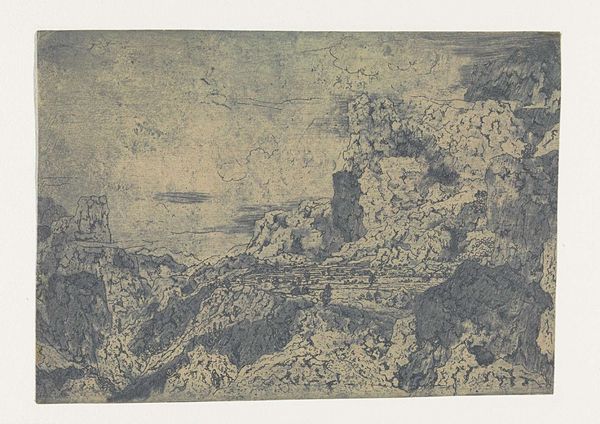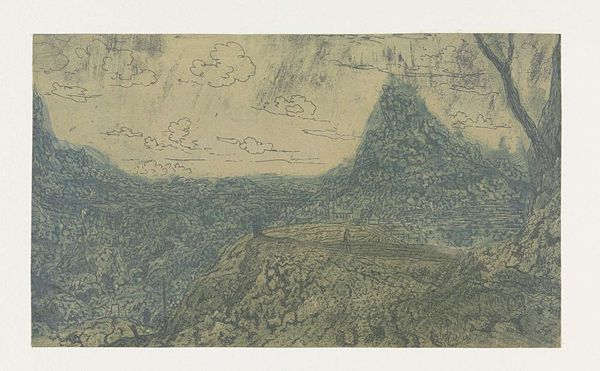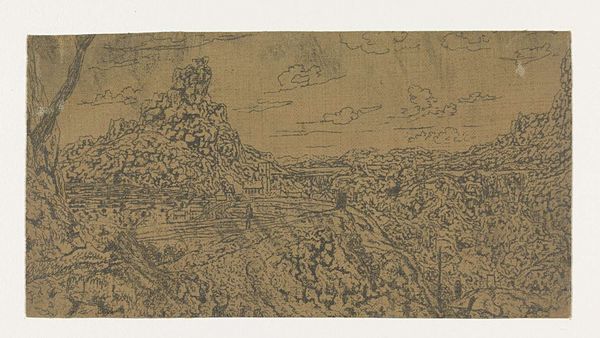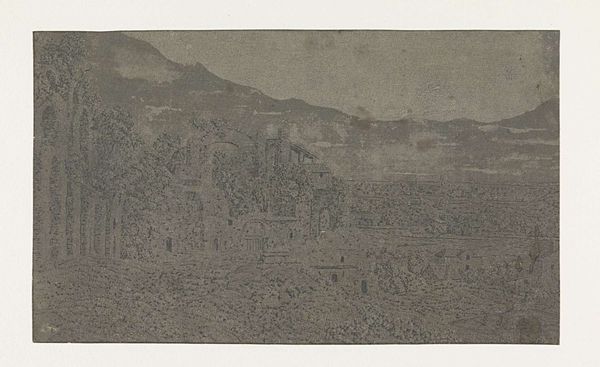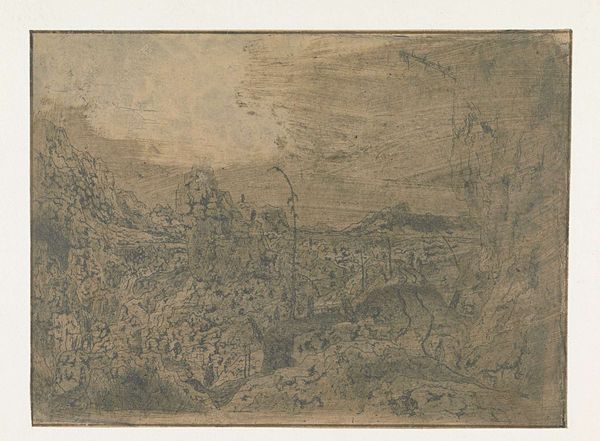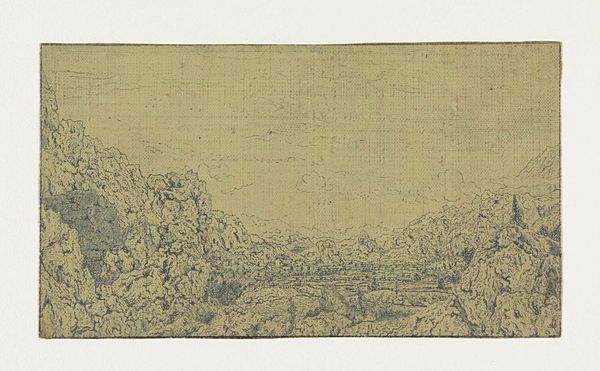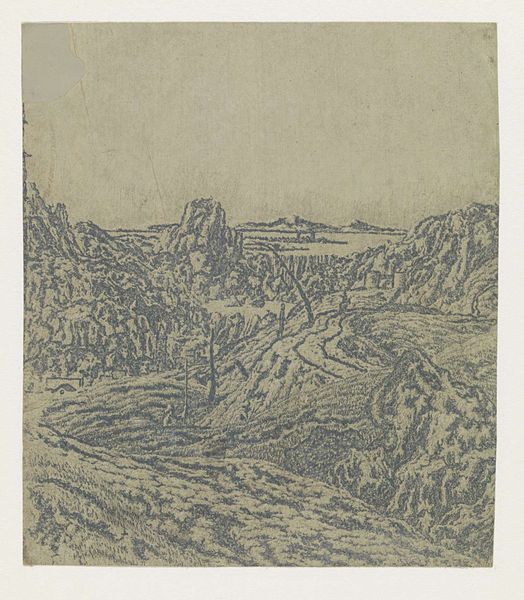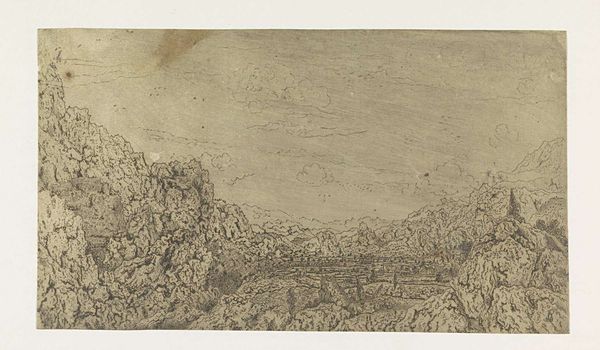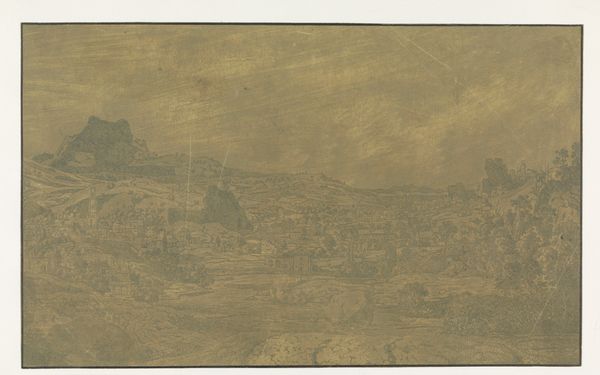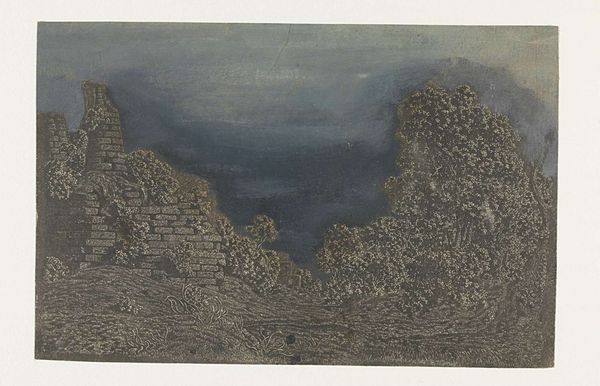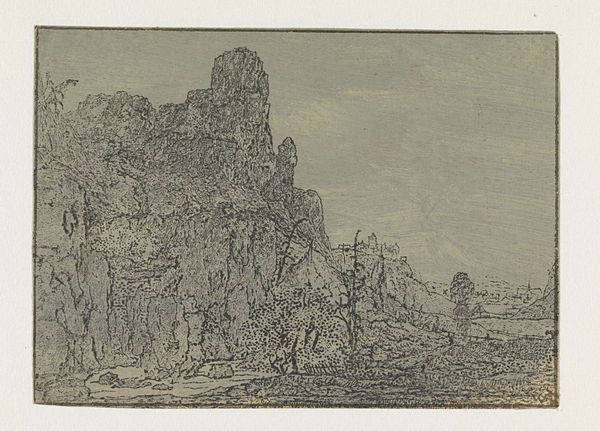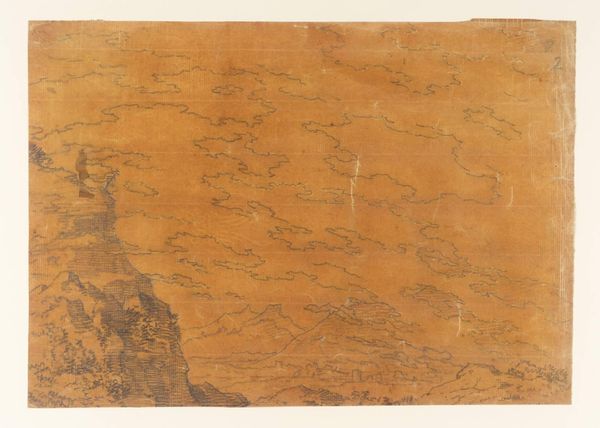
drawing, print, etching, paper
#
drawing
#
baroque
# print
#
etching
#
landscape
#
paper
#
linocut print
Dimensions: height 126 mm, width 202 mm
Copyright: Rijks Museum: Open Domain
Editor: Hercules Segers’s “Mountain Landscape with a Plateau,” created around 1625 to 1630, using etching and printmaking techniques, feels incredibly textured for a drawing. I'm struck by how imposing yet desolate the mountains seem. What do you see in this piece? Curator: You know, I feel the same sense of weight and solitude. Segers really evokes that Baroque drama, but subverts the usual bombast with what feels like a deeply personal yearning. It’s like peering into a dreamscape, slightly unsettling. Look at how the light barely touches the plateau, accentuating the rough, almost primordial forms. Don't you get the impression that Segers is maybe thinking through existential themes? Editor: Existential, definitely. It also looks like an early attempt at abstraction almost! Are those washes of color intentional, or are they a result of the printing process? Curator: That's perceptive of you to see! I think they're both. He clearly relished experimenting with the printmaking process – like adding colored washes after the initial etching. It really sets him apart from other landscape artists of the period, adding a whole layer of atmosphere and meaning. The texture creates an unreal landscape of sorts, which lends the artist the opportunity to contemplate the natural world and its significance. It's an escape to a contemplative space for me. What are you taking away? Editor: That it's okay to break the mold. It makes me want to see how I can bring experimental practices to my own creative endeavors. Curator: Precisely! And who knows? Perhaps that’s exactly the sort of feeling that Segers was aiming for – that the viewer sees a creative piece in themselves as well!
Comments
rijksmuseum about 2 years ago
⋮
As happens so often the shadows in drypoint wore down (RP-P-OB-820). They were replaced by triangular and round stipples pricked directly into the plate with a punch (a metal tool).
Join the conversation
Join millions of artists and users on Artera today and experience the ultimate creative platform.
